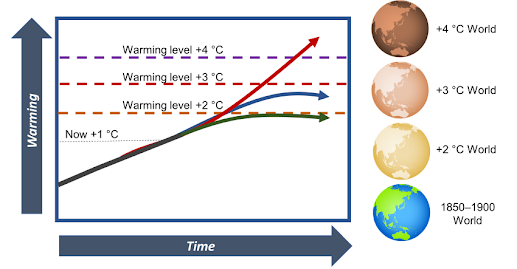
Global warming, as a long-term and ongoing process, has been taking place for more than a century. The term “global warming” typically refers to the increase in the Earth’s average surface temperature, primarily due to the release of greenhouse gases into the atmosphere. Here’s a general timeline of the key developments related to global warming:
The 500-year perspective allows science to determine exactly when the warming trends that the earth is witnessing started. It is found that in the tropical oceans and over Northern Hemisphere continents the earliest signs of warming developed around the 1830s to 1850s.
When The Global Warming Started And General Timeline Of The Key Developments
Late 19th Century: The Industrial Revolution marked the beginning of significant human-induced changes to the Earth’s climate. The burning of coal, oil, and other fossil fuels for industrial and transportation purposes started to release carbon dioxide (CO2) and other greenhouse gases into the atmosphere.
Mid-20th Century: By the mid-20th century, scientists had already recognized the potential for global warming due to increased greenhouse gas concentrations. In 1958, Charles David Keeling began monitoring atmospheric CO2 concentrations at Mauna Loa Observatory in Hawaii, establishing the Keeling Curve, which demonstrated the steady rise in CO2 levels.
1980s: The issue of global warming gained more attention and scientific consensus. The Intergovernmental Panel on Climate Change (IPCC) was established in 1988 to assess and report on the science of climate change. The IPCC’s reports have played a significant role in shaping international climate policy.
1990s-Present: Since the 1990s, global efforts to address global warming and climate change have intensified. Key milestones include the United Nations Framework Convention on Climate Change (UNFCCC) in 1992, the Kyoto Protocol in 1997, and the Paris Agreement in 2015. These international agreements set targets for reducing greenhouse gas emissions to mitigate global warming.
Global warming continues to be a pressing global issue, with the Earth’s average temperature rising over the years. The impacts of global warming, including more frequent and severe weather events, rising sea levels, and ecological disruptions, are becoming increasingly evident. As a result, there is a growing focus on reducing emissions, transitioning to renewable energy sources, and taking other measures to limit the extent of global warming and its associated consequences.







